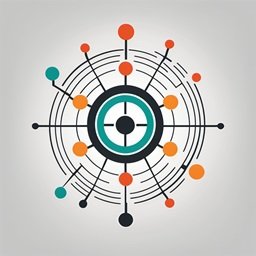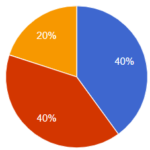UCAT Abstract Reasoning Strategies
What is Abstract Reasoning?
Abstract reasoning is the ability to quickly identify patterns, logical rules, and trends in data, integrate information, and solve problems. This type of reasoning is akin to pattern recognition and measures the ability to grasp complex ideas, relationships, and principles that are not immediately apparent.
Key Aspects of Abstract Reasoning:
- Pattern Recognition: Identifying recurring patterns or sequences in data or visual information.
- Problem-Solving: Applying logical thinking to solve novel problems without relying on prior knowledge.
- Logical Thinking: Drawing inferences, making connections between different pieces of information, and reasoning deductively.
- Adaptability: Adjusting to new information and shifting thinking strategies as required.
Importance of Abstract Reasoning for Doctors:
Diagnostic Skills: Doctors often encounter patients with complex and atypical symptoms. Abstract reasoning helps in identifying underlying patterns that might not be immediately obvious, leading to accurate diagnoses.
Interpreting Medical Data: Medical professionals need to analyze and interpret various forms of data, such as lab results, imaging studies, and patient histories, to make informed decisions. Abstract reasoning allows for the integration of this diverse information.
Problem-Solving in Clinical Settings: Medical situations are often dynamic and unpredictable. Doctors must think on their feet, adapt to new information quickly, and devise effective treatment plans.
Research and Innovation: Medical research involves identifying trends, understanding complex data sets, and developing new treatments. Abstract reasoning is crucial for making discoveries and advancing medical knowledge.
Complex Decision-Making: Doctors must weigh multiple factors, such as patient preferences, potential risks, and benefits, to make sound clinical decisions. This requires the ability to think abstractly and consider all possible outcomes.
Interpreting and Synthesizing Information: Physicians must stay updated with the latest medical research, guidelines, and best practices. Abstract reasoning aids in synthesizing this information and applying it to patient care.
How Abstract Reasoning is Tested in the UCAT:
The UCAT Abstract Reasoning subtest assesses these abilities by presenting candidates with patterns and sequences of shapes and asking them to identify rules, predict sequences, and distinguish between different sets based on abstract criteria. This ensures that future doctors have the necessary cognitive skills to handle the complexities of medical practice.
Conclusion:
Abstract reasoning is essential for doctors as it underpins many of the critical cognitive functions required for effective medical practice. By testing abstract reasoning skills, the UCAT ensures that aspiring medical professionals possess the ability to think logically, solve complex problems, and adapt to new information—key qualities for providing high-quality patient care.
Strategies for the UCAT Abstract Reasoning Subtest
1. Understand the Question Types
| Type 1 | Presented with two sets of shapes labelled “Set A” “Set B”. You will be given a test shape and asked to decide whether the test shape belong to Set A. Set B, or Neither. |
| Type 2 | Presented with a series of shapes and asked to select next shape in the series. |
| Type 3 | Presented with a statement, involving a group of shapes. You will be asked to determine which shape completes the statement. |
| Type 4 | Presented with two sets of shapes labelled “Set A” “Set B”. You will be asked to select which of the four response options belong to Set A or Set B. |
2. Familiarize Yourself with Common Patterns
| Type 1 | Presented with two sets of shapes labelled “Set A” “Set B”. You will be given a test shape and asked to decide whether the test shape belong to Set A. Set B, or Neither. |
| Type 2 | Presented with a series of shapes and asked to select next shape in the series. |
| Type 3 | Presented with a statement, involving a group of shapes. You will be asked to determine which shape completes the statement. |
| Type 4 | Presented with two sets of shapes labelled “Set A” “Set B”. You will be asked to select which of the four response options belong to Set A or Set B. |
- Shape and Size: Look for patterns in the types of shapes and their sizes.
- Number: Pay attention to the number of shapes or certain elements within the shapes.
- Position and Direction: Observe the positions and orientations of shapes.
- Color and Shading: Note any patterns in the colors or shading used.
3. Develop a Systematic Approach
- Initial Scan: Quickly scan the options to get a general sense of the pattern.
- Identify Key Features: Look for key features that differentiate the shapes.
- Eliminate Options: Use the identified features to eliminate incorrect options.
- Double-Check Patterns: If you identify a potential pattern, check it against all examples to ensure consistency.
4. Practice Regularly
- Use UCAT practice materials to familiarize yourself with the types of patterns.
- Time your practice sessions to simulate real exam conditions and improve your speed.
5. Manage Your Time
- Don’t spend too long on any one question. If you’re stuck, move on and come back if you have time.
- Aim to answer easier questions first to secure quick marks and build confidence.
6. Stay Calm and Focused
- Keep a clear mind and don’t panic if you encounter a difficult pattern.
- Use any available time at the end of the subtest to review and check your answers.
Abstract Reasoning
- If shapes between boxes are completely different, then it is likely to be a number
- Rotation is common for type 2 and 3 questions.
- SCAN – conditionals – ‘if’ and ‘then’ conditions.
Shape:
- Straight/curvy
- Concave/convex
- Open/closed
- Longest side
- Right/obtuse/acute /reflex angles
- Regular/ irregular
Colours:
- Part of the shape is shaded.
- Particular kind of shape is shaded.
Arrangement:
- Top, Bottom, Left, Right, Middle.
- Clockwise, Anti-clockwise, 90 vs 180 rotations.
- Shape rotation, shape position relative to each other.
- Arrows pointing to/away from shapes or the box.
Number:
- Number of total shape, particular shapes, sides, intersections angles.
- Odd or even.
Size:
- Big/Medium/Small
Patterns
|
– White shape inside the same black shape with a different opposite shape outside it. – 2 number of overlaps in each box – Overlapping region in each box – 8 number of edges – Number of edges + direction of arrow – 8 lines of symmetry – 3 odd or even numbers of 2 shapes (separately) – 4 conditional – direction of arrow to shading of shape (s) – 10 – number of shapes (IEB) – 2 Odd or even number of arrow crossings – Number of lines in a zig zag – Increasing number of sides from e.g. top to bottom – 8 – direction of arrow – Number of edges _ odd or even + shading – Shading of shapes – Odd or even + shading – 2 – conditional – shading to arrangement of shape(s) – Number of shape + type of shapes overlapping |
– Conditional – size of shape to arrangement – Curved/straight edges – 3 Acute/Obtuse angles – Number of arrowheads = number of circles/squires -/+ 1 – Conditional – direction of arrow to arrangement of shape – 2 – rotation/ reflection – Arrow intersections – Direction and number of arrows is = number of shaded shapes – Multiples – Number of enclosed regions – Curved shapes + type of shape + conditional –points of intersection to shading – Conditional – number of edges to number of shapes – The hours hand is even and minute hand is odd (clock) – Shaded and unshaded shapes are separate or overlap – In corners in clockwise direction with 2 shaded circle and one striped circle – Prime number of sides |
Patterns
- Number of shapes |||||||||||||||||||||||
- Symmetry |||||
- Direction of up/down or shape ||||||||||||||
- No edges |||||||||||||||
- Odd/Even |||||||||||||||||||||||||||||
- Prime numbers 1
- Multiples ||
- Acute/Obtuse angle (right angles) ||||||
- Curved/Straight edge |||| (direction a curved points at e.g. left) ||||||||
- Shading + another rule |||||||||||||||||||||||||||
- Overlapping or enclosed region ||||||||||
- Arrangement (usually with a conditional) ||||||||||||||||||||||
- Rotation/reflection
- Regular/Irregular shape
- Intersections ||||
- Point shapes (e.g. square is 1 point, triangle is 2 point etc.)
- Number of curves is even/odd – certain shape is present
- If total number of circle is more than non-circle all circles are block
- There is always an arrow, heart, white circle so if the arrow points at the circle, the heart is block. The heart is white if it points to the edge of the box
- Parallel lines (and perpendicular) |
- Vertices |||
- Bottom shape has even/odd number of sides. The rightmost shape has odd or even number of sides
- Concave/convex |
- White triangle is straight line/black triangle is curvy line
- All dots are attached to two others dots
- Appearance of shape |||||||||||||||
- Shape positioned on corners/edges
- Direction of shape correspond to odd/even number of sides
- Total number of vertices is 7, number of vertices for all quadrilaterals is halved
- Each letter in alphabet correspond to a number (e.g. 4=1), the number is odd/even
- White triangle is equal to number of block circles
- Clockwise/anticlockwise ||
- Moving clockwise, number are in ascending order
- Number of triangle (e.g. 1 isosceles, 2 right-angled, 1 equilateral)
- An arrow pointing left is cancelled out by an arrow pointing right, therefore the number of squares is = the number of arrows that aren’t cancelled out.
- If there is a white circle, there’s a white triangle. If there’s a black circle, there’s a white and black triangle opposite each other
- Patterns
- Shape with largest number of edges is at the bottom
- If triangle is black, arrow points at straight edge if triangle is grey, arrow points at curved edge
- White shape has one line of symmetry while black shapes have more than 1 line of symmetry.
- Size
- Same number of circle as lines







